 The Cash Box Kings are part of the multi-ethnic, crossgenerational, Chicago-based community of musicians that includes the Killborn Alley Blues Band, guitarist Billy Flynn, producer/multi instrumentalist Gerry Hundt, and other like-minded souls. Like the others, the Kings put as much fire into country blues like the title track as they put back porch soul into its citified counterpart on tunes like guitarist Joel Paterson’s snaky “That’s My Gal” or the Stones’ “Off The Hook,” even meeting country music coming the other way on Hank Williams’ “Blues Come Round.”
The Cash Box Kings are part of the multi-ethnic, crossgenerational, Chicago-based community of musicians that includes the Killborn Alley Blues Band, guitarist Billy Flynn, producer/multi instrumentalist Gerry Hundt, and other like-minded souls. Like the others, the Kings put as much fire into country blues like the title track as they put back porch soul into its citified counterpart on tunes like guitarist Joel Paterson’s snaky “That’s My Gal” or the Stones’ “Off The Hook,” even meeting country music coming the other way on Hank Williams’ “Blues Come Round.”
Good as much contemporary blues is, it’s often missing that unnamable “thing” that characterized the smoke and whiskey-fueled Kent Records early electrified blues of the 1940s and ’50s. Whatever that thing is, it’s here in abundance. It’s in vocalist/harmonica player Joe Nosek’s original shuffle “Fraulein On Paulina” and the old-timey “Hayseed Strut,” which has Flynn’s mandolin snug against gutbucket bass from Jimmy Sutton and piano from the aptly nicknamed Barrelhouse Chuck that is so spot-on you can smell the spilt beer and pig knuckles. And it’s in their take on Muddy Waters’ “Feel Like Going Home” – a tune that shows that even in one of possibly hundreds of cover versions and after many decades, the Great One’s mojo is still preternaturally strong.
Veteran singer Charles Wilson and Paterson are a spine-tingling combination punch on a bare-bones working of Lightnin’ Hopkins’ “Katie Mae” that at least ties Paterson for MVP honors with Nosek, who contributes several solid compositions like “Sara,” where he shows himself to be the quintessential guitar player’s harmonica man working in perfect tandem with Flynn and Paterson to the point where, at times, like on Paterson’s snaky “That’s My Gal,” it’s only the timbre of the instruments that distinguishes harp from guitar. Sutton’s vocal and Paterson’s guitar mesh similarly in “Oh My Baby’s Gone,” another Nosek original.
The Cash Box Kings’ blues conveys powerful joy, commitment, and connection to history, and reminds us that so much of America’s great music is delicious fruit from the same tree. When it’s as good as it is here, it’s all one can do to refrain from doing just what the album title suggests.
This article originally appeared in VG‘s Jan. ’12 issue. All copyrights are by the author and Vintage Guitar magazine. Unauthorized replication or use is strictly prohibited.

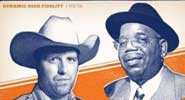
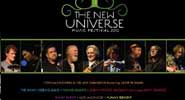
 This double-disc contains some of the most challenging guitar music recorded in the past year. While the four featured guitarists – Alex Machacek, Wayne Krantz, Jimmy Herring, and John McLaughlin – all shine, it’s Krantz who really steals the show.
This double-disc contains some of the most challenging guitar music recorded in the past year. While the four featured guitarists – Alex Machacek, Wayne Krantz, Jimmy Herring, and John McLaughlin – all shine, it’s Krantz who really steals the show.  Ultrasound Amplifiers’ CP100 acoustic amp has a custom 8” speaker, a tweeter, 100 watts of output, and digital effects. Channel One has XLR and 1/4″ inputs, and controls for Volume, Bass, and Treble. Channel two offers both types of input connection, Channel two has Bass and Treble controls, we well as a Shape control for altering midrange, and a Notch Filter to further the dynamics of desired tones. Visit
Ultrasound Amplifiers’ CP100 acoustic amp has a custom 8” speaker, a tweeter, 100 watts of output, and digital effects. Channel One has XLR and 1/4″ inputs, and controls for Volume, Bass, and Treble. Channel two offers both types of input connection, Channel two has Bass and Treble controls, we well as a Shape control for altering midrange, and a Notch Filter to further the dynamics of desired tones. Visit 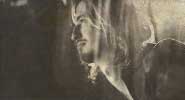


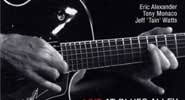
 Martino has been recording for almost 50 years, originally as sideman to such funk-jazz greats as saxophonist Willis “Gator” Jackson and organists Brother Jack McDuff, Richard “Groove” Holmes, Don Patterson, and Trudy Pitts. When he began leading his own sessions, first with 1967’s El Hombre, he delved into Middle Eastern modes, unorthodox time signatures, and fusion while still referencing his mix of hard bop and funk (what’s now called “acid jazz”) and paying homage to his biggest influence, Wes Montgomery – literally, with 1972’s The Visit, later reissued as Footprints (get it).
Martino has been recording for almost 50 years, originally as sideman to such funk-jazz greats as saxophonist Willis “Gator” Jackson and organists Brother Jack McDuff, Richard “Groove” Holmes, Don Patterson, and Trudy Pitts. When he began leading his own sessions, first with 1967’s El Hombre, he delved into Middle Eastern modes, unorthodox time signatures, and fusion while still referencing his mix of hard bop and funk (what’s now called “acid jazz”) and paying homage to his biggest influence, Wes Montgomery – literally, with 1972’s The Visit, later reissued as Footprints (get it). Blackstar Amplification has added a range of compact boost, overdrive, and distortion pedals known as the LT series. Derived from Blackstar’s HT range, each has a buffered bypass and silent switching. They include the continuously variable LT Boost, with controls for Bass and Treble cut/boost, the Drive overdrive pedal with Gain, Level, and Tone, the Dist, with ISF control, the Metal for extreme gain, the Dual, which has two Gain- and Level-equipped distortion channels, and switching that simulates a three-channel amp. For more, visit
Blackstar Amplification has added a range of compact boost, overdrive, and distortion pedals known as the LT series. Derived from Blackstar’s HT range, each has a buffered bypass and silent switching. They include the continuously variable LT Boost, with controls for Bass and Treble cut/boost, the Drive overdrive pedal with Gain, Level, and Tone, the Dist, with ISF control, the Metal for extreme gain, the Dual, which has two Gain- and Level-equipped distortion channels, and switching that simulates a three-channel amp. For more, visit 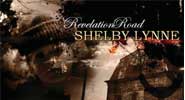
 Revelation Road comes from an artist who knows exactly what she wants and how to get it, and can come up with an end product that displays brilliantly the worth of the work put into it. This may be a country record ostensibly, but Alabama native Lynne, who has a musical and spiritual kinship with the late Dusty Springfield, is as much Muscle Shoals soul as anything else. As producer, songwriter, and musician, she achieves a perfect balance of all elements on a low-key, but intense, worthy follow up to her excellent 2010 release, Tears, Lies And Alibis.
Revelation Road comes from an artist who knows exactly what she wants and how to get it, and can come up with an end product that displays brilliantly the worth of the work put into it. This may be a country record ostensibly, but Alabama native Lynne, who has a musical and spiritual kinship with the late Dusty Springfield, is as much Muscle Shoals soul as anything else. As producer, songwriter, and musician, she achieves a perfect balance of all elements on a low-key, but intense, worthy follow up to her excellent 2010 release, Tears, Lies And Alibis.
 The triple-LP Europe ’72 is a highlight in the Dead’s extensive live catalog, and 40 years later Rhino is presenting a companion set of unreleased material for those who just can’t get enough. (For the truly obsessed, however, the label also just issued a massive, 73-CD set of the entire European tour.) Included here are tracks from the UK, Denmark, France, Germany, and even tiny Luxembourg. Jerry Garcia is in fine form throughout, leading the ensemble with near-endless solos, but also conjuring up excellent interplay with rhythm man Bob Weir and bassist Phil Lesh, himself a terrific improviser. Also featured on this tour was their new keyboardist Keith Godchaux, who until his untimely death in 1979, would add inspiring piano work to the band during what many consider their peak years.
The triple-LP Europe ’72 is a highlight in the Dead’s extensive live catalog, and 40 years later Rhino is presenting a companion set of unreleased material for those who just can’t get enough. (For the truly obsessed, however, the label also just issued a massive, 73-CD set of the entire European tour.) Included here are tracks from the UK, Denmark, France, Germany, and even tiny Luxembourg. Jerry Garcia is in fine form throughout, leading the ensemble with near-endless solos, but also conjuring up excellent interplay with rhythm man Bob Weir and bassist Phil Lesh, himself a terrific improviser. Also featured on this tour was their new keyboardist Keith Godchaux, who until his untimely death in 1979, would add inspiring piano work to the band during what many consider their peak years. The Ambrosonics Pickup Director is a programmable/reconfigurable pickup switching system that uses optical switching technology. Designed to fit guitars and basses, it allows pickups to be wired in series, parallel, series/parallel, in-phase or out-of-phase, and to blend piezo pickups. It can store settings, and, using the company’s Mezzanine Expander, allow various configurations as well as programmable two-, three-, and four-band EQ. Learn more at www.ambrosonics.com.
The Ambrosonics Pickup Director is a programmable/reconfigurable pickup switching system that uses optical switching technology. Designed to fit guitars and basses, it allows pickups to be wired in series, parallel, series/parallel, in-phase or out-of-phase, and to blend piezo pickups. It can store settings, and, using the company’s Mezzanine Expander, allow various configurations as well as programmable two-, three-, and four-band EQ. Learn more at www.ambrosonics.com.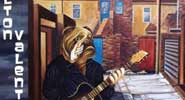
 For players in their late 50s and early 60s, the Animals’ #1 “House Of The Rising Sun” is often cited as a benchmark, with guitarist Hilton Valentine’s arpeggiated intro as indelibly stamped as Alan Price’s organ solo. It’s not flashy or difficult; in fact, that’s the beauty of it – it’s an easy way to learn five chords and hear every note distinctly. But something about Valentine’s timing and the tone he got out of his Gretsch Tennessean (through a Selmer Selector-Tone amp) was nigh impossible to replicate exactly.
For players in their late 50s and early 60s, the Animals’ #1 “House Of The Rising Sun” is often cited as a benchmark, with guitarist Hilton Valentine’s arpeggiated intro as indelibly stamped as Alan Price’s organ solo. It’s not flashy or difficult; in fact, that’s the beauty of it – it’s an easy way to learn five chords and hear every note distinctly. But something about Valentine’s timing and the tone he got out of his Gretsch Tennessean (through a Selmer Selector-Tone amp) was nigh impossible to replicate exactly.